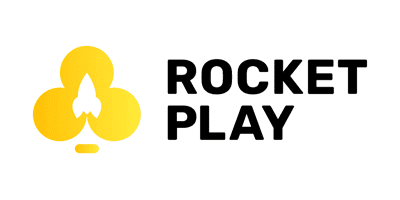NO DEPOSIT BONUS
This bonus is a rare find. All you have to do is sign up to a site with a no deposit bonus code and you’ll get a no-deposit money play bonus. The downside of this bonus is that it is always a low amount, around five or ten dollars. However, you don’t need much to get started. Some players have created big bankrolls, starting with a no deposit bonus and handing it out to the penny and nickel tables. It’s a great bonus for anyone who wants to start playing online without risking their own real money. Plus, if you’re a good player looking for a challenge, there’s no greater achievement than building a big bankroll with literally no personal investment.
FIRST DEPOSIT BONUS
This bonus offers a reward for your first deposit, also known as the welcome bonus. Sometimes it’s a gift like free books, but usually, these bonuses correspond to a percentage of your deposit. For example, if you deposit $100 on a site that offers a 50% first deposit bonus, you will receive $50 just for playing. You will have to clear this bonus, which means you will not see this money until you play a certain number of hands chosen by the site. This is a popular bonus offered by poker sites, and some of them match you to 100% of your deposit (like this one).
Of course, poker sites have the maximum value they match, but it can be huge, around R$300 to R$500 is the highest on most sites. If possible, deposit the maximum amount to get the most out of your bonus. After all, you only get a first-time deposit bonus on a website. However, clearing a large deposit bonus can take some time. If you don’t want to spend as much time clearing a bonus, deposit less or try a different bonus.
RAKEBACK BONUS
This may be the best poker sign-up bonus offered. A rake is how the poker room makes money. Every time someone wins a pot, a small percentage of that pot goes to the website hosting the game. This means that even when you win your hands, you still lose a small number of your winnings. Occasionally, a player may do well in a game but still cannot win rake, which means he is only losing because of what the house does.
A Rakeback bonus gives you a percentage of your money back, around 30% to 40% on most sites. Also, this bonus does not expire, which is its best benefit. You will continue to receive your Rakeback money while playing. In the long run, this bonus is worth more than others.
Every site offers bonuses like these. You can usually find a deposit bonus on the poker site itself, but some of the others can be hard to find. It may be necessary to search the Internet to find any deposit bonuses or Rakeback. Now that you know what these bonuses are and how they work, you can figure out a strategy for using them that will increase your poker income.
VIP CLUB REWARDS BONUS FOR ONLINE POKER SITES
Another type of bonus that almost all poker sites offer is the frequent player bonus. Most of these bonuses are in the form of frequent player points that you can redeem for all sorts of different things, from merchandise and trips to professional-level poker tournaments around the world. They will also give frequent players access to different levels of rooms with better tournaments and payouts. These types of bonuses usually have no requirements because to get them you need to play often. Bonuses are just an additional reward you get for playing a lot, which is great. These bonuses are usually detailed and accessed through the poker room’s VIP Club rewards program at the best casinos.

HOW TO CHOOSE THE BEST BONUS
Choosing the best deposit bonus requires a little research. Poker companies are not charities, so the bonuses they offer aren’t quite the free money they make out to be. To access your bonus money, you must play for real money on the site. During these hands, you pay rake to the site which represents the house fee for playing the games, and in reality, your bonus is just a refund of a certain percentage of those fees.
Typically, your access to your bonus money will be tied to the amount of ‘player points’ you accumulate during play and will generally be released in small increments in chunks when you reach player point milestones or in a fixed amount when you hit the total amount of points needed.
Look for expiration dates, which is important, because the shorter it is, you’ll have more time to bet and fulfill and anything done in a hurry can be as good as it is with peace of mind.
The bonus value is another extremely necessary point to have as a base, do the research and see which value best fits your reality and betting possibilities.
WHERE TO USE MY BONUS
CASH GAME
This is the format in which most players are first introduced to poker, often played around the table. As the name implies, it is played for money, not matchsticks, coupons, or any other means other than real money. This type of game is regularly played all over the world in homes, clubs, inns, casinos, arcades, and on the internet.
Depending on the stakes in the game, there is usually a minimum buy-in to start. Often, in the no-limit game, there is also a maximum value. This is really a form of protection for players. No-Limit or Pot-Limit cash games usually require a buy-in of 20 to 100 big blinds. So, in a no-limit game with blinds of $1 / $2, you can usually buy-in from $40, but a standard buy-in would be $200.
Fixed limit tables generally require at least 10 times the small bet. Therefore, a $2 / $4 game would therefore have a minimum buy-in of $20. The buy-in amount will vary from location to location, as will the stakes.
There are real money cash games for all budgets, especially if you play online.
TOURNAMENTS
In a standard tournament format, all players enter the same amount of money which also carries a fee that the entity managing the tournament maintains. For example, “Casino Pokerology” may offer a no-limit hold ’em tournament that has a R$50 entry cost plus a R$5 fee to play. Once you post the $55, $50 of which goes towards the prize and the other $5 is the tournament fee, you can receive $2,000 in non-negotiable tournament chips. Blinds can start at $10 and $20 and increase every twenty minutes. The continuous escalation of the blinds forces players to “bet” more than just playing conservatively and waiting for premium cards. This format is how player friction reduces the number of starting players to eventual winners.
The number of winners usually depends on the number of starting players, but typically in a tournament with a BRL 50 entry fee, if there were 100 starting players providing a BRL 5,000 prize pool, it might pay the last nine or ten players into the final table. First place can be between 30 and 50% of the prize pool, with less for second, third, fourth, and so on. This example is intended to demonstrate how one tournament can work, not to state as a fact how they all work. The number of your starting chips, the starting blind levels, the length of time in each blind level, and the distribution of the total prize pool are at the discretion of the tournament organizer and can vary significantly. Always make sure you understand exactly what is being offered for your tournament dollar.
Remember that the chip values used in a tournament are only relevant to the tournament itself. You can have more chips than anyone else after an hour, but you can’t walk away and exchange chips for real money. Chips are only related to your position in the tournament and, to receive payment, you must finish in the positions that are paid. For example, if a tournament plays among the top 10 players out of 100, you will not receive anything for finishing 11th-100th. You can have more chips with 50 players left, but that doesn’t count for anything unless you’re in the top 10.
In addition to the standard tournament format explained above, where for a cost you enter and multiple players, like ten, split the prize, there are other ways in which tournaments can work.

